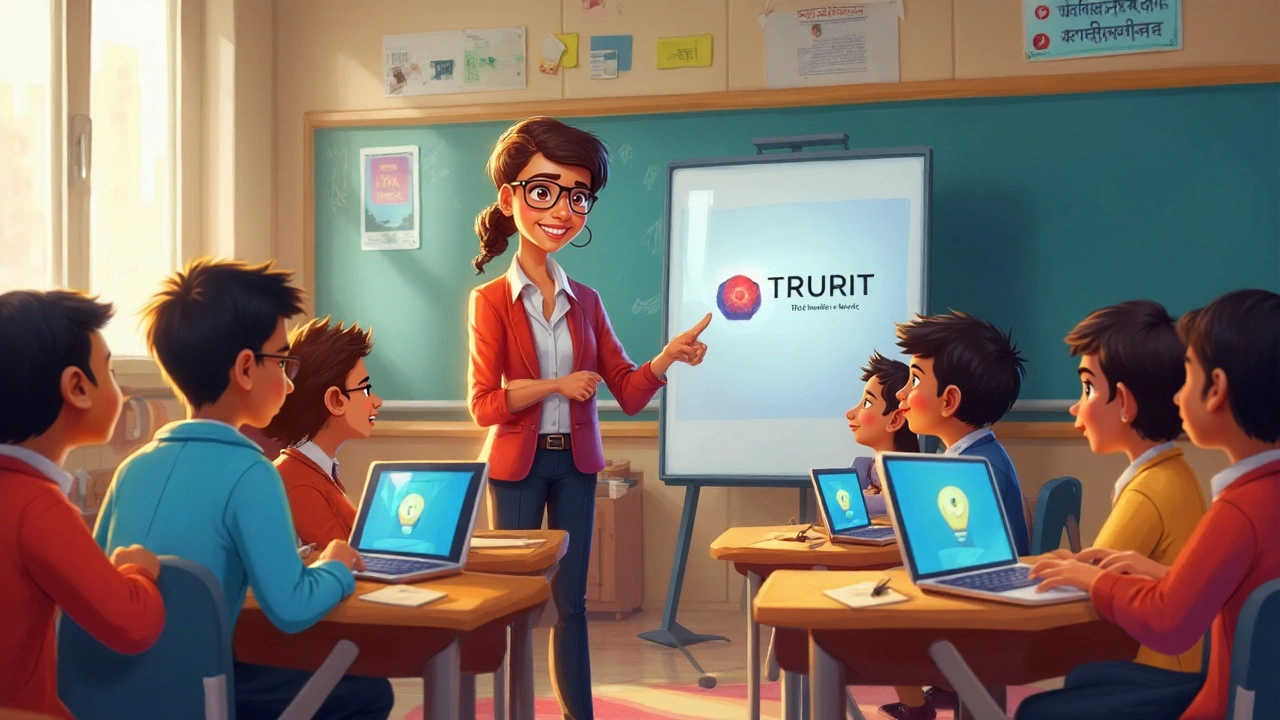Scroll through any social feed today and it hits you—we’re surrounded by ads for online courses and endless talk about learning from home. But not all these platforms are created equal. Just how big can a learning platform get, and what makes one the biggest? It’s more than just student numbers or course counts. The leader is rewriting the rules for how we learn; it’s setting global trends and feeding into nearly every industry’s need for skills. Ready to figure out who’s really at the top and why so many people trust their education to this platform?
How Online Learning Grew Into a Giant Industry
Online learning started out as a quiet experiment—a few universities tried uploading classes for remote students, letting them download lessons on clunky laptops. The late 2000s saw a steady trickle of open courseware, but the real boom happened in the last decade. As connection speeds shot up and smartphones became the new campus, anyone could tap into classes anywhere, anytime. Suddenly, the biggest learning platforms drew millions, then tens of millions. Just look at 2023’s stats: Coursera crossed 120 million registered learners, Udemy hit over 62 million, and LinkedIn Learning skyrocketed past 27 million users. If you add up the numbers across platforms, you get hundreds of millions of people logging in to learn every month. It’s no exaggeration to call this a revolution in education.
But size isn’t just about how many people sign up. It’s measured in breadth—think number of languages, choices of topics, and partnerships with universities and companies. Coursera, for example, works with over 325 top institutions (Stanford, Google, Yale—the list goes on) to serve a global crowd. Platforms like EdX join forces with MIT and Harvard, while Udemy lets individual teachers upload courses on just about anything. Open access, massive reach, and the ability to build personal skills or chase formal degrees are all parts of what have made the biggest platforms household names.
COVID-19 didn’t just nudge this growth; it sent it into hyperdrive. As schools shut their doors and offices went remote, millions looked for quick upskilling. In 2020 alone, online course enrollment soared by 640% on some platforms. EdTech investment hit $16 billion globally, according to industry tracker HolonIQ, pulling in big money and new features almost overnight. Online learning went from nice-to-have to must-have, cementing the place of these digital platforms at the center of education and work.
Here’s a quick snapshot to show how the biggest names compared by the end of 2024:
| Platform | Number of Learners | Partners | Courses Offered |
|---|---|---|---|
| Coursera | 120 Million+ | 325+ | 7,500+ |
| Udemy | 62 Million+ | 70,000+ Instructors | 213,000+ |
| edX | 50 Million+ | 160+ | 5,100+ |
| LinkedIn Learning | 27 Million+ | Unknown | 21,000+ |
| Khan Academy | 137 Million Users/Month | Donors, Non-profit | 10,000+ |
Notice the numbers don’t tell the whole story. Coursera leads with university partnerships and global reach, Udemy dominates sheer course volume, and Khan Academy is huge in the free K12 space. But each one serves a slightly different audience and style. That’s why no two platforms are quite the same—even at this scale.
What Makes One Platform “The Biggest”?
The phrase “the biggest learning platform” pops up a lot, but what does it actually mean? Is it about who’s got more registered users, who offers broader choices, or who’s changing future work the most? Honestly, it’s a mix of all three. If you’re chasing stats alone, Coursera usually takes the crown these days. With its 120 million learners and massive range of content, it’s tough to beat on reach. But size also comes down to influence. Coursera leads in setting trends—the rise of micro-credentials, collaboration with global companies (like Google and IBM), and letting learners build everything from job-ready certificates to full Master’s degrees online.
Here’s a tip worth remembering: Pay attention not just to numbers, but also the platform’s partnerships and what opportunities it actually opens for students. Take Coursera’s Google Career Certificates. People with no college degree can now finish one of these popular courses in a couple of months, then tap straight into job interviews with partner companies. Around 75% of certificate graduates reported improvements in their career or education within six months, based on Coursera’s 2023 annual survey. That’s not just big; it’s transformative.
Also, the biggest platforms tend to have the widest international footprint. Coursera and edX translate content into dozens of languages. This means, whether someone’s in Brazil, Egypt, or Scotland, chances are good there’s something they can access in a language they understand. This reach is a huge reason why big-name partners sign on—it’s all about getting skills into every corner of the world.
Interactivity and tech also play a role. Coursera, for instance, invested in AI tools that suggest personalized paths for learners, based on their goals. If you stall out in a class, you might get helpful nudges or recommended extra reading. Udemy uses an instructor-driven approach, letting anyone upload a course, so you see everything from advanced Python to how to play the ukulele. This flexibility draws millions of self-starters and hobbyists.
In short, calling one platform the “biggest” does depend on what matters most to you—global prestige, course number, tech features, or job outcomes. But right now, Coursera is hard to top when you look at the full picture. The biggest learning platform isn’t just where the crowd is, it’s about where real opportunity starts.

The Features That Set Top Learning Platforms Apart
So what’s behind the curtain? What’s making the leading platforms more than mere digital course shelves? Several things stand out. First is content quality. Coursera and edX team up with “brand-name” universities, so you get professors from Princeton or skills from top Silicon Valley employers. The best platforms are like inviting the world’s most famous teachers into your living room, without airfare or visa applications.
Then there’s the variety. One day, you might be upskilling in data science, the next you’re dabbling in Korean or digital art. On Coursera, there’s stuff for every age—whether it’s high schoolers chasing Advanced Placement credits, or executives tackling MBA-level modules. Even Udemy’s wild variety pays off; a quick search pulls up courses on drone piloting, vegan cooking, and even basket weaving. Sometimes the biggest win comes from finding that super-specific course nobody else is offering.
Next, flexibility is key. Life doesn’t run on university timetables. People want to learn at 1 a.m. if that’s when the baby finally fell asleep, or in the middle of a Scottish thunderstorm with nothing but a mug of tea and Wi-Fi. Asynchronous classes, mobile apps, and downloadable materials make it work for techies, teens, and retirees alike.
Feedback and certification matter, too. On top platforms, quizzes, projects, and peer reviews make things way more valuable than a static slideshow. Certificates are digital, instantly shareable, and, in the case of many Coursera programs, carry university credits or formal recognition by employers. That’s a big deal when you’re job-hunting—LinkedIn’s own data showed that users who share their new certificates get a 9% boost in profile views, often catching the eye of recruiters.
Finally: community and support. The biggest platforms now mimic the best parts of campus life—study groups, discussion boards, and networking events for alumni. It’s easy to underestimate, but learning with peers or getting a nudge from a community manager can keep you motivated.
If you’re shopping around for a platform, ask yourself:
- Does it offer the subject or credential you want?
- Are top universities or companies involved?
- Is the platform easy to use on your devices?
- Will your certificate actually boost your resume or open new doors?
- Can you get help or advice if you get stuck?
Who Uses These Giants – And Why?
Think online learning is just for over-caffeinated students or tech industry hopefuls? Guess again. The biggest platforms now draw crowds from every walk of life. Working parents log on after their shift to pivot careers. Grandparents pick up Spanish to talk to grandkids. Nurses cram for advanced certificates between shifts, and teenagers in small Scottish towns finish high school math with help from Khan Academy. Remote workers, new immigrants, retired professionals with time to fill—there’s no ‘average’ online learner anymore.
Some of the surge comes from companies themselves. In 2024, Amazon put over 100,000 workers through online upskilling, while Google and IBM used platforms like Coursera to deliver technical certificates direct to their global staff. Why? Because it’s cheaper, instant, and relevant—no one wants skills from two years ago now. The ability to roll out the latest AI training or coding updates overnight to thousands is a clear win for employers.
Some universities even accept credits from MOOCs (massive open online courses), meaning you could, for instance, take “Data Science at Johns Hopkins” through Coursera, then transfer those credits to a formal degree. According to the World Economic Forum’s 2024 data, over 40% of university students worldwide had completed at least one MOOC during their studies.
Accessibility is huge. Free courses, scholarships, and low-cost monthly subscriptions mean that you don’t need deep pockets to access a lot of content. Khan Academy is a lifesaver for families who can’t afford tutors; its lessons are ad-free, nonprofit, and always free. That’s helped it grow to more than 137 million users monthly—proof that size and impact don’t always translate to a hefty bill.
And don’t forget professional changers—the marketing exec gunning for a Google Analytics certificate, or the IT worker beefing up cloud computing skills to get a better job. The biggest learning platforms aren’t just servicing students; they’re lifelong companions for anyone who realizes the best paying jobs, the safest careers, and the happiest hobbies all start with the right mix of knowledge and support.

The Future: Is “Biggest” Always Best?
Does the size of a learning platform automatically mean it’s the best fit for you? Sometimes yes, often no. The big players have the resources to stay current, scale up support, and keep up with tech trends. But their sheer size can also make it tricky to find that close-knit community or rare academic niche you crave. Smaller, specialist platforms are thriving too—think MasterClass for cinematic deep-dives or Codecademy for pure coding bootcamps.
Yet the trend is clear: the biggest get bigger, and their features and reach keep expanding. Coursera now offers full bachelor’s and master’s degrees for a fraction of on-campus costs. Udemy regularly brings fresh courses on everything from AI to mindfulness. Even traditional universities are leaning on these giants to reach beyond old campus walls. It’s a feedback loop: as more people join, the quality and quantity of courses go up, which then attracts even more learners.
For anyone looking to jump in, here are some quick-use tips:
- Decide on your goal (certificate, skill, degree, or just curiosity) before picking a platform.
- Browse free trials to get a feel for teaching style, platform design, and interaction before paying.
- Read reviews from past learners, focusing on course structure and instructor feedback.
- Hop into forums and discussion boards—community can make or break the experience.
- Don’t be shy about mixing platforms! Take a free math class on Khan Academy, sharpen coding on Udacity, and grab a LinkedIn Learning badge in time management all at once. Think of these platforms as parts in your personal education toolkit.
What’s wild is how all this is still unfolding. Five years ago, nobody predicted platforms would offer micro-degrees that employers now chase, or that virtual study groups would link Scottish teens with peers in Delhi. Expect smart tech—AI tutors, adaptive lessons, and voice assistants—to make things even more personalized. The biggest learning platforms set the standard for where and how we learn, and it’s safe to say the digital classroom is only going to get more crowded and more capable from here on out.








